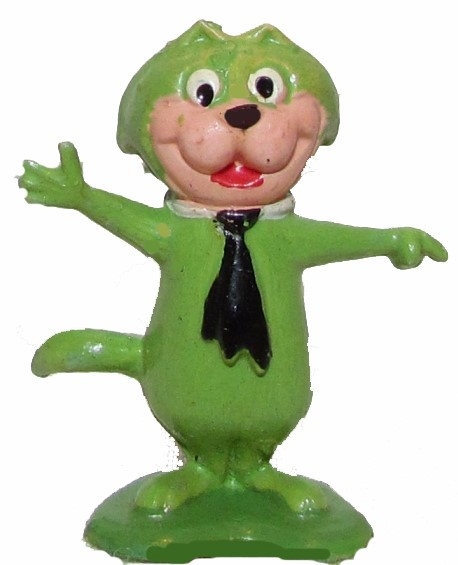
 |
Physical Single Sales by Format 1988-2005 |
Post Reply 
|
Page 123> |
| Author | |
Todd Ireland 
Music Fan 
Joined: 16 October 2004 Location: United States Status: Offline Points: 23 |
 Post Options Post Options
 Thanks(1) Thanks(1)
 Quote Quote  Reply Reply
 Topic: Physical Single Sales by Format 1988-2005 Topic: Physical Single Sales by Format 1988-2005Posted: 19 March 2025 at 2:30am |
|
There has been significant interest on the chat board recently in trying to determine the most popular 2-track commercial single format on a year-by-year basis for chart years in which multiple formats were made available in the U.S. market, particularly from the late '80s through the late '90s. So, I've taken the liberty of citing the number of units sold in millions (M) for each available commercial single format from 1988 through 2005, using data from the U.S. Recorded Music Sales Volume by Format chart published by the Recording Industry Association of America (RIAA). I'm hoping this will help serve as a valuable reference guide for determining "official" single versions in cases where different versions of a Top 40 hit are featured as the lead track on multiple format releases. (For easier reference, I've highlighted the most popular format for each year in red italicized bold print):
1987 Vinyl 45 - 82.0M Cassette single - 5.1M 1988 Vinyl 45 - 65.6M Cassette single - 22.5M 1989 Cassette single - 76.2M Vinyl 45 - 36.6M 1990 Cassette single - 87.4M Vinyl 45 - 27.6M CD single - 1.1M 1991 Cassette single - 69.0M Vinyl 45 - 22.0M CD single - 5.7M 1992 Cassette single - 84.6M Vinyl 45 - 19.8M CD single - 7.3M 1993 Cassette single - 85.6M Vinyl 45 - 15.1M CD single - 7.8M 1994 Cassette single - 81.1M Vinyl 45 - 11.7M CD single - 9.3M 1995 Cassette single - 70.7M CD single - 21.5M Vinyl 45 - 10.2M 1996 Cassette single - 59.9M CD single - 43.2M Vinyl 45 - 10.1M 1997 CD single - 66.7M Cassette single - 42.2M Vinyl 45 - 7.5M 1998 CD single - 56.0M Cassette single - 26.4M Vinyl 45 - 5.4M 1999 CD single - 55.9M Cassette single - 14.2M Vinyl 45 - 5.3M 2000 CD single - 34.2M Vinyl 45 - 4.8M Cassette single - 1.3M 2001 CD single - 17.3M Vinyl 45 - 5.5M 2002 CD single - 4.5M Vinyl 45 - 4.4M 2003 CD single - 8.3M Vinyl 45 - 3.8M 2004 Download single - 139.4M Vinyl 45 - 3.5M CD single - 3.1M 2005 Download single - 366.9M CD single - 2.8M Vinyl 45 - 2.3M I didn't think there was a practical need to compile single sales volume by year any further because it's quite evident by this point that download singles have since remained the most popular singles format by a huge margin. So, based on RIAA data, the "dominant" commercial single format by era can be summarized as follows from 1955 to the present day: 1955-1988: Vinyl 45 1989-1996: Cassette single 1997-2003: CD single 2004-present: Download single Edited by Todd Ireland |
|
 |
|
aaronk 
Admin Group 
Joined: 16 January 2005 Location: United States Status: Offline Points: 297 |
 Post Options Post Options
 Thanks(0) Thanks(0)
 Quote Quote  Reply Reply
 Posted: 19 March 2025 at 8:15am Posted: 19 March 2025 at 8:15am |
|
Awesome post, Todd! This is incredibly helpful. Thanks for taking time to research it.
|
|
 |
|
ChicagoBill 
Music Fan 

Joined: 06 November 2019 Location: Utah Status: Offline Points: 24 |
 Post Options Post Options
 Thanks(0) Thanks(0)
 Quote Quote  Reply Reply
 Posted: 19 March 2025 at 8:20am Posted: 19 March 2025 at 8:20am |
|
Not real surprising to me. In 1989, the decline in sales of the vinyl singles can be
attributed to the lack of availability, especially in the lower rungs of the Hot 100. The Hot Country singles in 1990 still had a 90% or so availability on vinyl. The Hot Soul singles at that time mirrored the Hot 100. I remember some Top 10 singles in 1991 were still not available on vinyl and some were released after the single had already peaked. -Bill |
|
 |
|
Paul Haney 
Music Fan 

Joined: 01 April 2005 Status: Offline Points: 51 |
 Post Options Post Options
 Thanks(0) Thanks(0)
 Quote Quote  Reply Reply
 Posted: 19 March 2025 at 9:54am Posted: 19 March 2025 at 9:54am |
|
Thanks for posting this. It looks like Record Research was
pretty close on the 1990-98 "cassette single" era used for the Top Pop Singles book. I think the fact that a lot of collectors personally didn't like the cassette single has clouded their judgement on just how popular they were with the singles buying public at the time. |
|
 |
|
Todd Ireland 
Music Fan 
Joined: 16 October 2004 Location: United States Status: Offline Points: 23 |
 Post Options Post Options
 Thanks(0) Thanks(0)
 Quote Quote  Reply Reply
 Posted: 19 March 2025 at 12:47pm Posted: 19 March 2025 at 12:47pm |
|
I think you're probably right about that, Paul. For one thing, I didn't realize how cassette singles' popularity had exploded in 1989, though I do recall purchasing my first ever cassette single that spring (Jimmy Harnen with Synch's "Where Are You Now", a song that could have easily been mistaken for an REO Speedwagon "power ballad"!). I was always a CD guy, but occasionally I would buy cassette singles just to have a professional sounding copy of current hit songs that I could play endlessly in my car's cassette deck.
It does surprise me a bit, though, how long it took CD single sales to eventually surpass cassette single sales in 1997, given that regular CD sales overall had overtaken that of cassettes five years prior. I do recall in late 1992/early 1993 when I first became interested in seeking out CD singles and being frustrated by the lack of product available on that format at the time. I distinctly remember a standard 2-track CD single typically retailing for $4.99, while maxi-CD singles went for $6.99. These were expensive price points in those days, especially for looking to acquire only one song, so I imagine this was probably a significant reason why CD singles sales seemed to catch on rather slowly in the U.S. market. |
|
 |
|
Todd Ireland 
Music Fan 
Joined: 16 October 2004 Location: United States Status: Offline Points: 23 |
 Post Options Post Options
 Thanks(0) Thanks(0)
 Quote Quote  Reply Reply
 Posted: 19 March 2025 at 1:43pm Posted: 19 March 2025 at 1:43pm |
|
A couple of other thoughts that have occurred to me... I firmly believe that CD singles were really never marketed properly in the U.S. and therefore never truly enjoyed a bonafide sales boom here. By the time this format had finally emerged as the preferred one among consumers, record labels began to stop making popular hits available as retail single releases in favor of forcing consumers into having to purchase these songs on their more expensive album counterparts.
Meanwhile, there was no uniform packaging standard with U.S. CD single releases. Thus, consumers were treated to a messy hodgepodge of the product being issued in everything from standard jewel cases to slimline jewel cases to cardboard sleeves to "digipaks", etc. which made storing them both a pain and an eyesore. I give full credit and props to European countries for marketing CD singles the right way... As far back as 1989, or even 1988 in the U.K., one could reliably find pretty much any hit song available on CD single and uniformly issued in a slimline jewel case! |
|
 |
|
Scanner 
Music Fan 
Joined: 14 August 2019 Location: New York Status: Offline Points: 9 |
 Post Options Post Options
 Thanks(0) Thanks(0)
 Quote Quote  Reply Reply
 Posted: 19 March 2025 at 6:58pm Posted: 19 March 2025 at 6:58pm |
|
Nice try, Paul. The split between the Pop books should
have been between the Hot 100 as a record chart versus the song chart it became in late 1998. Perhaps you can address this if/when future editions of the Pop books are published. I think one problem with CD singles was also content...or lack thereof. CD singles and albums were the same size making singles seem like a ripoff when the same medium could have so much more content. At least a 45 was smaller than an album - you got less music and less physical product. Cassingles were the same - seeing so little tape through the window felt like such a ripoff especially when cassettes were not that durable in the first place. Edited by Scanner |
|
 |
|
aaronk 
Admin Group 
Joined: 16 January 2005 Location: United States Status: Offline Points: 297 |
 Post Options Post Options
 Thanks(0) Thanks(0)
 Quote Quote  Reply Reply
 Posted: 19 March 2025 at 7:52pm Posted: 19 March 2025 at 7:52pm |
|
I have always loved CD singles and never considered them a rip off. Product size really has very little to do with the price (which is true of many physical products), and in the case of singles, the price was adjusted according to content on the disc (or tape). “More content” was on the full-length album, and those were usually 3X the price of a maxi single.
I’m quite glad the physically smaller 3” CD didn’t become popular as a single format. They are a lot harder to handle, can’t be played in slot loading players, and look like mini replicas of a normal CD. Edited by aaronk |
|
 |
|
eriejwg 
Music Fan 

Joined: 10 June 2007 Location: United States Status: Offline Points: 134 |
 Post Options Post Options
 Thanks(0) Thanks(0)
 Quote Quote  Reply Reply
 Posted: 19 March 2025 at 8:14pm Posted: 19 March 2025 at 8:14pm |
|
As a wedding DJ, in the days before (legal) downloads
became available, I always preferred CD singles for the newer and newest music back then. That way, I was only buying it for the hit vs. buying a whole album CD for one song that might not turn out to be a hit. By 1994, I was so happy to discover Top Hits U.S.A. for DJ's so I could get all the potential hits on one disc. Eventually, I switched to PrimeCuts in 2005 and then Promo Only in 2018 when Primecuts ceased. |
|
|
John Gallagher
Erie, PA Celebrating 28 years as a full-time wedding & special event DJ! |
|
 |
|
prisdeej 
Music Fan 
Joined: 02 July 2011 Location: United States Status: Offline Points: 17 |
 Post Options Post Options
 Thanks(0) Thanks(0)
 Quote Quote  Reply Reply
 Posted: 19 March 2025 at 9:51pm Posted: 19 March 2025 at 9:51pm |
I always believed the Walkman had alot to do with this. Cassettes would play without skipping, as they really didn't perfect the CD versions until later. |
|
|
DJ L.
|
|
 |
|
Post Reply 
|
Page 123> |
| Tweet |
| Forum Jump | Forum Permissions  You cannot post new topics in this forum You cannot reply to topics in this forum You cannot delete your posts in this forum You cannot edit your posts in this forum You cannot create polls in this forum You cannot vote in polls in this forum |